
Stockport is an industrial town in Greater Manchester, England, 7 miles (11 km) south-east of Manchester, 9 miles (14 km) south-west of Ashton-under-Lyne and 12 miles (19 km) north of Macclesfield. The River Goyt and Tame merge to create the River Mersey here. It is the main settlement of the wider Metropolitan Borough of Stockport.

A blue plaque is a permanent sign installed in a public place in the United Kingdom, and certain other countries and territories, to commemorate a link between that location and a famous person, event, or former building on the site, serving as a historical marker. The term is used in the United Kingdom in two senses. It may be used narrowly and specifically to refer to the "official" scheme administered by English Heritage, and restricted to sites within Greater London; or it may be used less formally to encompass a number of similar schemes administered by organisations throughout the UK. The plaques erected are made in a variety of designs, shapes, materials and colours: some are blue, others are not. However, the term "blue plaque" is often used informally to encompass all such schemes.

The Metropolitan Borough of Dudley is a metropolitan borough of West Midlands, England. It was created in 1974 following the Local Government Act 1972, through a merger of the existing Dudley County Borough with the municipal boroughs of Stourbridge and Halesowen.
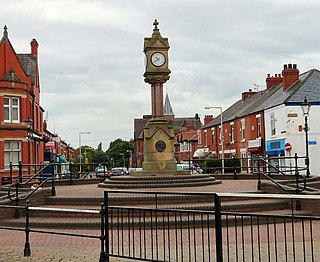
Reddish is an area in Metropolitan Borough of Stockport, Greater Manchester, England. 4.6 miles (7.4 km) south-east of Manchester city centre. At the 2011 census, the population was 28,052. Historically part of Lancashire, Reddish grew rapidly in the Industrial Revolution and still retains landmarks from that period, such as Houldsworth Mill, a former textile mill.

Middleton is a town in the Metropolitan Borough of Rochdale, Greater Manchester, England, on the River Irk 5 miles (8.0 km) southwest of Rochdale and 5 miles (8.0 km) northeast of Manchester. Middleton had a population of 42,972 at the 2011 Census. It lies on the northern edge of Manchester, with Blackley to the south and Moston to the south east.
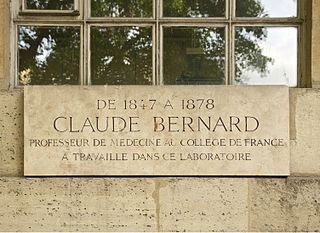
A commemorative plaque, or simply plaque, or in other places referred to as a historical marker, historic marker, or historic plaque, is a plate of metal, ceramic, stone, wood, or other material, typically attached to a wall, stone, or other vertical surface, and bearing text or an image in relief, or both, to commemorate one or more persons, an event, a former use of the place, or some other thing. Many modern plaques and markers are used to associate the location where the plaque or marker is installed with the person, event, or item commemorated as a place worthy of visit. A monumental plaque or tablet commemorating a deceased person or persons, can be a simple form of church monument. Most modern plaques affixed in this way are commemorative of something, but this is not always the case, and there are purely religious plaques, or those signifying ownership or affiliation of some sort. A plaquette is a small plaque, but in English, unlike many European languages, the term is not typically used for outdoor plaques fixed to walls.

Stockport Town Hall is a building in Stockport, Greater Manchester, England, that houses the government and administrative functions of Stockport Metropolitan Borough Council. Stockport Town Hall is a Grade II* listed building.
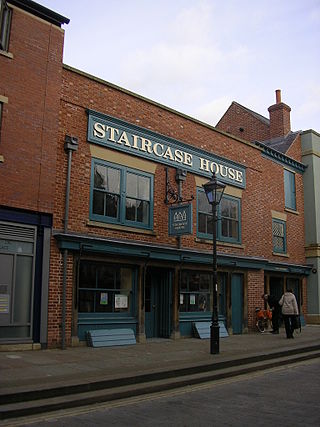
Staircase House, also known as Stockport Museum, is a Grade II* listed medieval building dating from around 1460 situated in Stockport, historically in Cheshire, now within Greater Manchester, England. The house is famous for its rare Jacobean cage newel staircase. An audio guide recounts the full history of the house.
The Swindon Civic Trust is a voluntary organisation and registered charity established in Swindon, England in 2001. Affiliated to the Civic Trust of England and Wales, the organisation's stated aims are to improve the quality of new and historic buildings and public spaces, and to help improve the general quality of urban life.

Abney Hall is a Victorian house surrounded by a park in Cheadle, Greater Manchester, England, built in 1847. It is a Grade II* listed building.
There is evidence of activity around Reddish – a settlement in Greater Manchester, England – before the Norman conquest in the presence of Nico Ditch and some Saxon coins. The recorded history of Reddish begins at the turn of the 13th century when it was documented as "Redich". Reddish remained a predominantly rural settlement throughout the medieval period, but expanded to become a mixed industrial and residential area during the 19th century. It developed rapidly during the Industrial Revolution, and still retains landmarks from that period, such as Houldsworth Mill.

Leeds Civic Trust is a voluntary organisation and registered charity established in Leeds, West Yorkshire, England in 1965. Affiliated to the national charity Civic Voice, its stated purpose is "to stimulate public interest in and care for the beauty, history, and character of the city and locality, to encourage high standards of design, architecture and town planning; [and] to encourage the development and improvement of features of general public amenity".
Stockport Heritage Magazine was started in 1987 by two founder members of Stockport Heritage, a voluntary conservation group campaigning to save buildings and traditions in the Borough of Stockport, historically in Cheshire, now within Greater Manchester.
Steve Cliffe, a former Stockport councillor, was the founding member of Stockport Heritage and Stockport Heritage Magazine circa 1987. He and his late wife, Jean, co-ordinated the efforts of Stockport Heritage to persuade English Heritage and the Stockport Metropolitan Borough Council to support the purchase and restoration of semi-derelict Staircase House, a 15th-century merchant's townhouse, as the town museum.

There are 48 Grade I listed buildings in Greater Manchester, England. In the United Kingdom, the term listed building refers to a building or other structure officially designated as being of special architectural, historical or cultural significance; Grade I structures are those considered to be "buildings of exceptional interest". In England, the authority for listing under the Planning Act 1990 rests with Historic England, a non-departmental public body sponsored by the Department for Culture, Media and Sport.

Woolwich Town Hall is an early 20th-century town hall located in the historic Bathway Quarter in the centre of Woolwich, South East London. Until 1965 it was the seat of local government of the Metropolitan Borough of Woolwich, after which it became the headquarters of the Greenwich London Borough Council. It is a rare example of an Edwardian Baroque town hall in London and is a Grade II*-listed building.
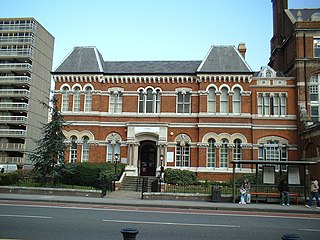
Walworth Town Hall is a municipal building in Walworth Road, Southwark, London. It is a Grade II listed building. It was built for the vestry of the parish of Newington, opening as the Newington Vestry Hall in 1865. When Newington became part of the Metropolitan Borough of Southwark in 1900 the building served as Southwark Town Hall. It ceased to be a headquarters of local government in 1965 when the London Borough of Southwark was created.
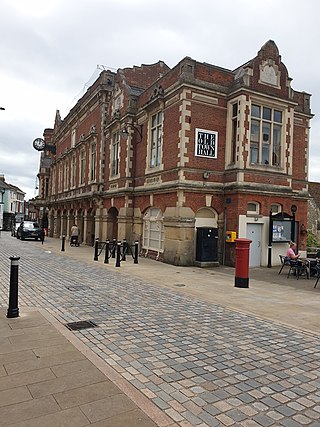
The Old Town Hall is a municipal building in the High Street, Hemel Hempstead, Hertfordshire, England. The town hall, which was the meeting place of Hemel Hempstead Borough Council, is a Grade II listed building.

The Underbank is an area of Stockport, Greater Manchester, England, containing the streets of Little Underbank and Great Underbank. Originally considered the finest shopping street in Stockport during the 19th century, the street was dubbed as Stockport's answer to Soho following an influx of independent businesses.















